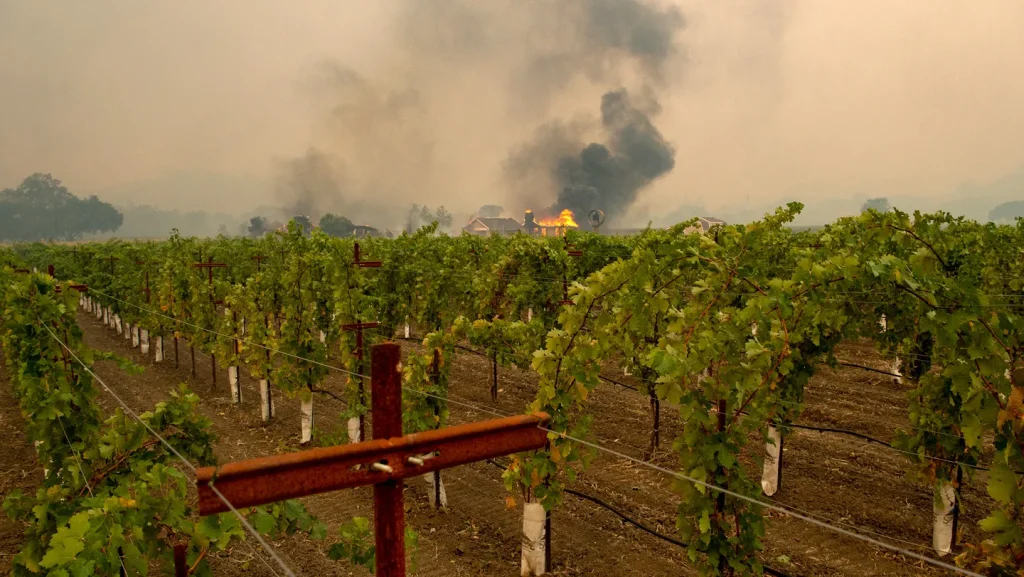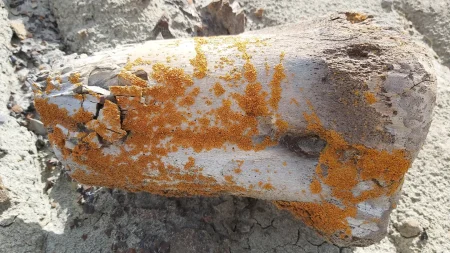Vineyard’s Tiny Heroes: How Grape Plant Bacteria Could Rescue Wine from Smoke Taint
In the serene landscapes of wine country, where rows of grapevines stretch toward the horizon, an invisible battle is taking place. As wildfires become increasingly common in major wine-producing regions around the world, vintners face a growing threat: smoke taint. This undesirable ashy flavor can infiltrate grapes exposed to wildfire smoke, potentially ruining entire harvests and causing significant economic losses. However, recent research has uncovered an unexpected ally in this fight—the naturally occurring bacteria that live on grape plants themselves. These microscopic residents might hold the key to breaking down the harmful compounds that create smoke taint, offering a natural solution to one of the wine industry’s most pressing challenges.
The problem of smoke taint emerges when wildfire smoke deposits volatile phenolic compounds onto grape skins. These compounds can bind with sugars in the grapes to form glycosides, which are initially tasteless but can be broken down during fermentation or aging to release those smoky, ashy flavors that no winemaker wants in their bottle. With climate change intensifying wildfire seasons in places like California, Australia, and parts of Europe, the wine industry has been desperately searching for effective methods to address this issue. Traditional approaches have included techniques like reverse osmosis or activated carbon treatments, but these can strip away desirable flavors along with the unwanted smoke compounds, leaving wines that lack character and complexity.
Nature, however, may have already developed its own solution right on the grape vines. The microbiome that exists naturally on grape plants—a community of bacteria and other microorganisms—appears to include species capable of metabolizing the very compounds responsible for smoke taint. These beneficial bacteria have evolved alongside grapevines for centuries, developing the ability to process various substances found in their environment. Scientists studying these microbial communities have identified specific bacterial strains that can effectively break down volatile phenolic compounds, transforming them into harmless byproducts before they can impart those unwanted flavors to the wine. This discovery represents a potential biological intervention that works with nature rather than against it.
What makes this approach particularly promising is its precision and sustainability. Unlike mechanical or chemical interventions that might affect the overall quality of the wine, bacterial solutions could potentially target only the problematic compounds while leaving the grape’s desirable characteristics intact. Researchers are now exploring various application methods, including developing sprays containing beneficial bacterial cultures that could be applied to vineyards after smoke exposure or introducing these helpful microbes during the fermentation process. Some forward-thinking vineyards are even considering ways to naturally enhance their existing grape microbiomes to create more resilient plants that can better withstand smoke exposure from the start.
The human dimension of this scientific breakthrough cannot be overlooked. For winemakers, particularly those operating small family vineyards that have been passed down through generations, smoke taint represents more than just a financial threat—it’s an emotional one. Many vintners speak of the heartbreak of having to discard grapes or downgrade premium wines after smoke exposure, watching years of careful cultivation and artistry literally go up in smoke. The possibility of a natural, bacterial solution offers not just practical help but psychological relief to communities whose identities and livelihoods are deeply intertwined with winemaking. As one multi-generational winemaker from Sonoma expressed, “We’ve always known our vineyards were living ecosystems. Finding out that the bacteria on our own vines might help protect our wines feels like discovering an old friend has had your back all along.”
While research continues and commercial applications are still being developed, the discovery of these helpful bacterial allies represents a beautiful example of how solutions to human problems often already exist within nature’s complex systems. The wine industry—an ancient practice that blends agriculture, science, and art—has always depended on microscopic organisms for the fermentation process itself. Now, it appears that different microbes might help preserve the authentic expression of terroir that makes each wine unique, even in the face of increasing environmental challenges. As climate change continues to reshape the conditions in which we grow food and produce beverages, such biological partnerships may become increasingly valuable across many agricultural sectors, reminding us that sometimes the smallest organisms can help solve our biggest problems.















